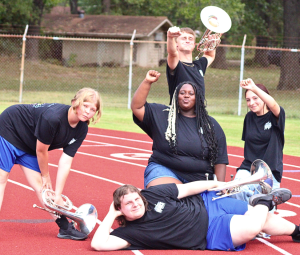Combating Your Senioritis
Simple steps to increase motivation
March 30, 2023
A well-known epidemic is returning to HHS. In previous years this condition was only limited to seniors. However, an additional strain has been reported, one that doesn’t discriminate.
Students of all ages and teachers of all subjects have reported symptoms of this unpleasant disease. This disease is known as “senioritis” and can cause a decline in morale, attention, attendance, and motivation, especially when it comes to school work. Like clockwork, this condition occurs at the end of every school year. Students are exhausted from school day activities, minimal time off, state testing, and more. Summer break seems more out of reach than ever, and students are having trouble staying motivated.
Motivation levels play a role in effort levels, information retention, concentration, success, and problem-solving. Simple, proactive steps can be taken to increase motivation.
Observing a positive role model is a step to increase motivation. Dreams, goals, and values may seem out of reach when a person doesn’t consistently see others achieving them. It is imperative, however, that while appreciating others’ successes, one should not diminish one’s own. Role models can provide helpful habits, positive influences, support, and guidance.
Setting a realistic, and achievable goal is another way to increase motivation. Goals allow one to measure success tangibly. Nothing is more demotivating than setting a goal and not reaching it. When developing a goal, it is imperative to define a specific task. It should include a measurable aspect, take relativity into account, as well as the time and resources available. For example, if a student aspires to attend an Ivy League school they could research the needed GPA/scores to incorporate a measurable goal. They could also create a timeline to stay in accordance with deadlines.
Another way to boost motivation for a task is to provide immediate rewards. This could look like developing a plan, assigning tasks to help complete the plan, and then allotting rewards for oneself after completing each task. These rewards don’t have to be expensive or extravagant. It can be as simple as taking a break on TikTok after finishing a homework assignment before starting the next. Rewards increase effort and discourage procrastination. Sometimes completing a task, even if it is beneficial in its own way, is not enough motivation. Simple rewards bridge the gap between tasks and are a manageable solution.
Ultimately, prioritizing self-motivation is crucial for achieving success. Thankfully, poor motivation can be improved using a wide range of techniques. Instating role models, setting goals, and implementing rewards are just a couple. Take the extra steps to monitor your motivation. You won’t regret it!











